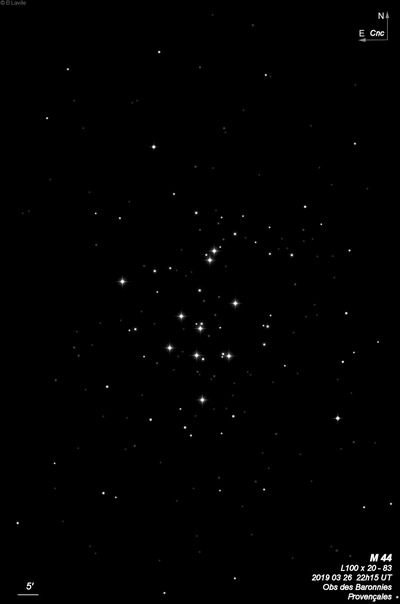Beehive,Praesepe Cluster
Beehive,Praesepe Cluster

Aratos of Soli made the first written mention of M44 = Beehive cluster about 260 BC in his work Phainomeina (called a "little mist") and it was probably noted 100 years earlier by Eudoxis. It was later recorded by Hipparchus around 130 BC as a "little cloud". Galileo made the first known telescopic observation that clearly resolved M44 into a star cluster, though a few stars may be glimpsed naked eye under excellent conditions. His observation of 1610 in Siderius Nuncius ("Starry Messenger") reads "The nebula called Praesepe, which is not one star only, but a mass of more than 40 small stars, I have noticed 36 stars besides the Aselli."
The earliest found reference to the nickname "Beehive" is from Admiral Smyth's Bedford Catalogue of 1844: "The Praesepe, metaphorically rendered Bee-hive, is an aggregation of small stars which has long borne the name of a nebula, its components not being separately distinguishable by the naked eye…"
Naked-eye - fairly bright fuzzy glow in dark skies. Granular with a few resolved stars in excellent conditions.
Notes by Steve Gottlieb